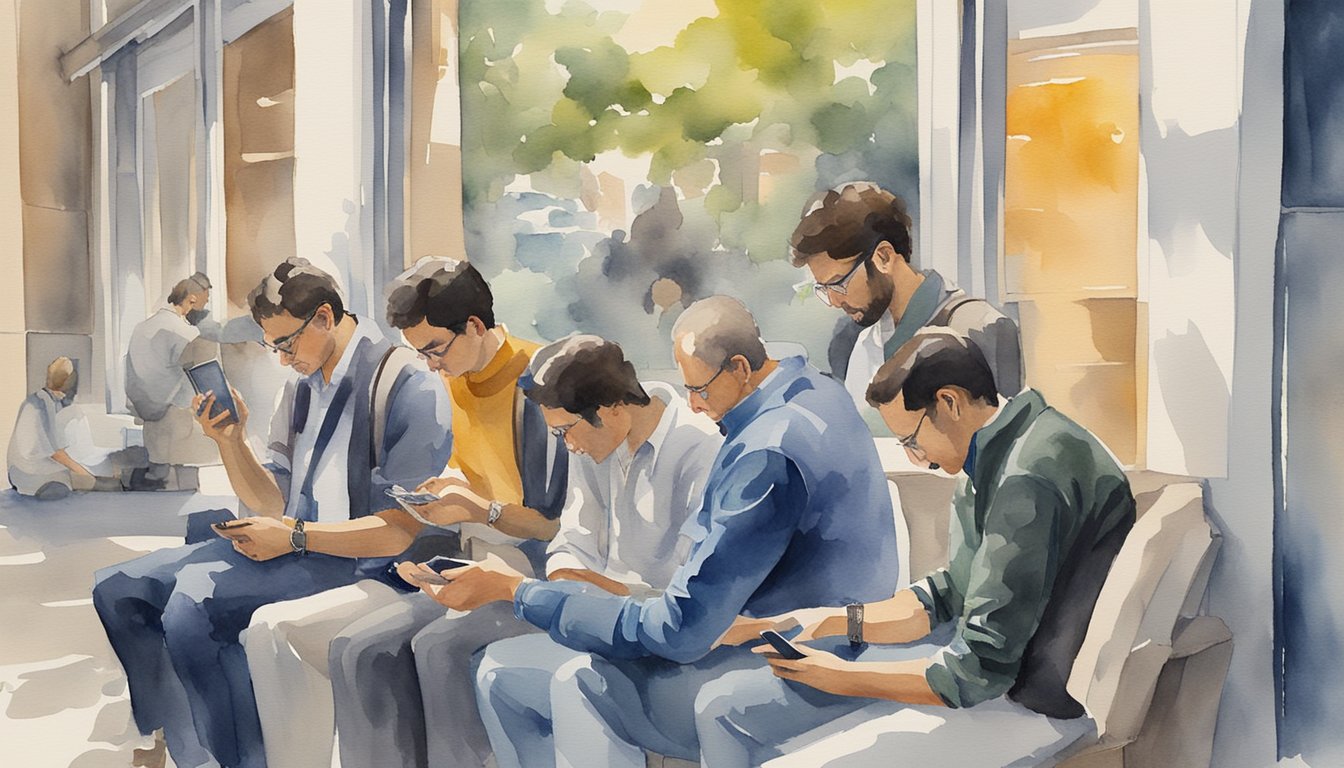The Dawn of Mobile Communication
Mobile communication revolutionized how people connect, leading to a world where staying in touch is as simple as a tap on a screen. Before this convenience became commonplace, there was a time of significant breakthroughs and inventions that paved the way for the mobile phone’s evolution.
Inception of Cellular Phones
The concept of cellular phones originated from the desire to create a device that could wirelessly communicate over long distances without the constraints of fixed lines. Experimentation and development in mobile communication trace back as early as the 1940s. However, it wasn’t until 1973 that the first true mobile phone was introduced by Martin Cooper, an engineer at Motorola. This prototype laid the groundwork for what would become a global phenomenon.
Breakthrough: DynaTAC 8000x
Motorola’s pivotal moment came in 1983 with the release of the DynaTAC 8000x, affectionately known as “the brick” due to its size and weight. This device was the first commercially available handheld cellular phone and symbolized the birth of a new era in telecommunications. With the Motorola DynaTAC 8000x, people were no longer tied to landlines and had the freedom to communicate from virtually anywhere.
Innovation and Evolution of Cell Phones
The journey of cell phones from bulky, basic devices to today’s sleek, multifunctional smartphones is a fascinating tale of technological advancements and industry milestones. Now, let’s dive into the key transformations that have shaped our handheld communications.
From Bricks to Flip Phones
The first mobile phones, often called “brick phones,” were large, heavy, and primarily focused on voice communication. In the early stages, companies like Motorola led the market with their DynaTAC 8000X, introduced in 1983. By the late 1990s and early 2000s, cell phones had started to become more compact and featured additional capabilities like text messaging. The introduction of the Nokia 3210, one of the first phones without an external antenna, and the iconic Nokia 3310 made mobile phones more accessible and user-friendly. Then came the flip phones, with the Motorola StarTAC and later the Razr, which added a level of style and portability that was previously unseen.
Enter the Smartphones
The term “smartphone” first came into use with the introduction of the IBM Simon Personal Communicator in 1994, but it was not until the launch of Apple‘s iPhone in 2007 that the smartphone revolution truly took off. Offering a multi-touch interface, internet connectivity, and a multitude of applications, the iPhone reshaped expectations for mobile technology. Shortly after, the first Android phone, the HTC Dream (also known as the T-Mobile G1), was introduced in 2008, signaling the start of the most widely used mobile OS’s dominance. Today, smartphones not only feature advanced touchscreens and high-speed 5G connectivity, but also pack cameras that rival professional photography equipment, and they continue to integrate more features such as QWERTY keyboards and advanced security features, which were popularized by devices like the BlackBerry. With each passing year, companies like Samsung, Sony, and Apple push the boundaries of what smartphones can do, constantly evolving the landscape of mobile communication.
Cell Phones and Societal Impact

Since their inception, cell phones have drastically altered the fabric of society, fundamentally changing the ways in which people communicate and interface with technology.
Changing the Way the World Communicates
The birth of mobile phone technology turned the concept of communication on its head. In the past, staying in touch meant being anchored to a location—like a home or an office. Now, the advent of cell phones has made it possible to speak to someone halfway across the globe while on the move. Progression from 1G to the innovative 5G network has paved the way for high-speed internet, making it possible to send not just voice messages but also text messages and emails instantaneously. The transformative effect of mobile devices extends to how businesses operate, allowing for a seamlessly connected workforce irrespective of geographical barriers.
Cell phones have also led to a burgeoning of apps designed for multiple aspects of daily life—ranging from transportation to food delivery, which are accessible from the palm of one’s hand. People have gone from merely consuming content to becoming content creators thanks to mobile technology and the internet. They now have the entire web in their pocket, reshaping not only how they communicate but also how they entertain themselves, shop, and learn.
The Pinnacle of Mobile Technology
Today’s cell phones are a far cry from the bulky bricks that were used a few decades ago. They are the very pinnacle of mobile technology, boasting capabilities that surpass basic communication. Contemporary mobile devices have become hubs for a myriad of functionalities, including advanced gaming, high-definition video streaming, and managing smart homes. Roaming services have evolved to support global travel, enabling people to communicate without the constraints of their home network operators.
The global system for mobile communications has further linked societies, facilitating wireless communication at an unprecedented scale. Moreover, innovations like wireless charging have added a new layer of convenience to mobile usage. In essence, the cell phone has revolutionized not just how people talk to each other but how they interact with the world itself. The reach of mobile technology continues to expand, and with it, society strides into new realms of connectivity and interaction.

